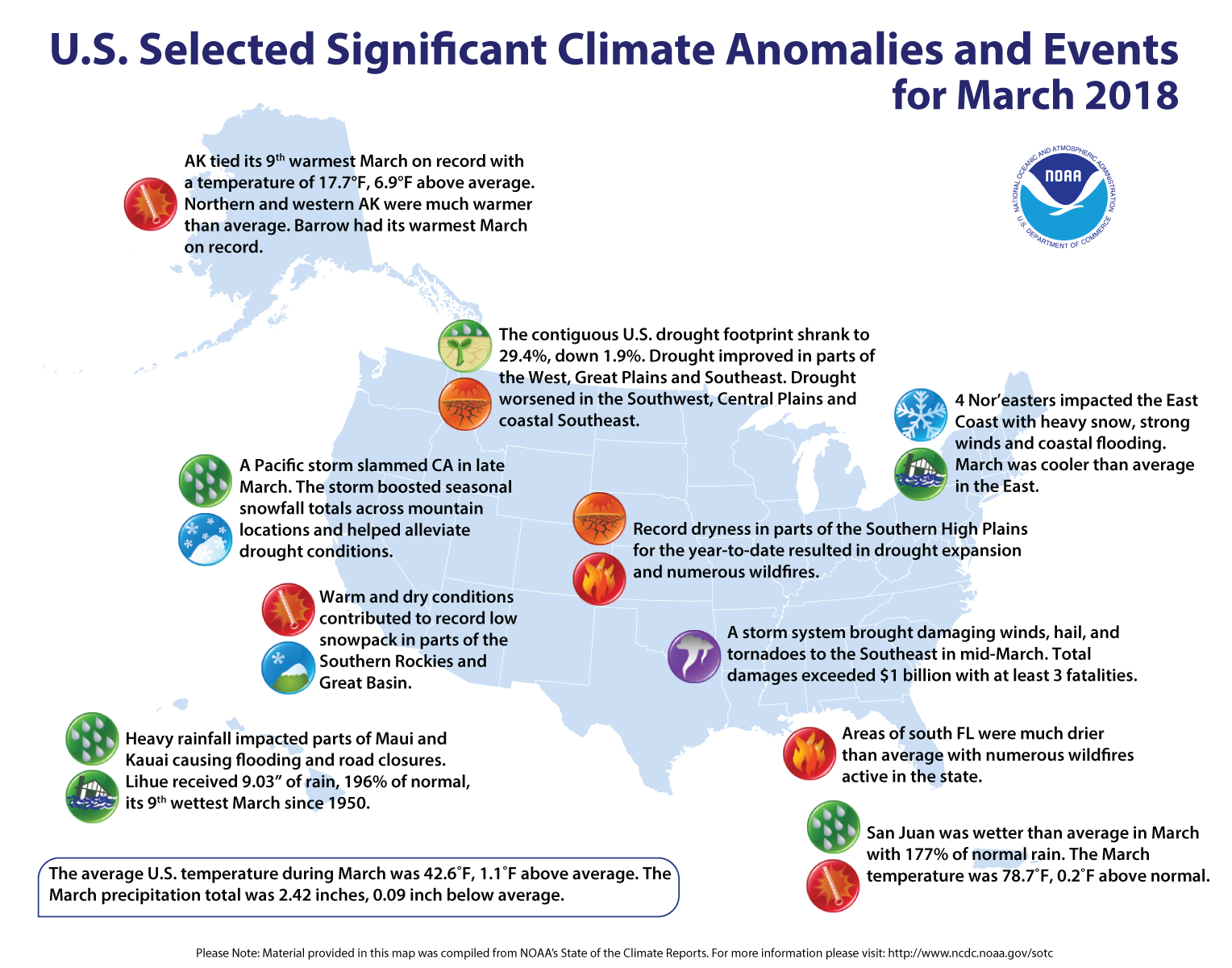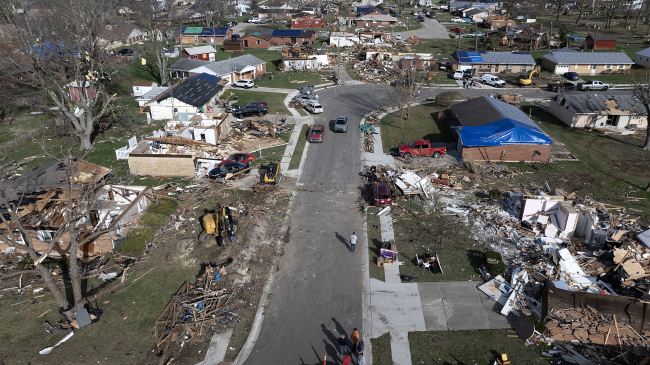March was cold and snowy in much of the East, warm in the south-central U.S.
Weather-wise, 2018 started out with a bang and continues to be anything but ordinary.

NOAA's GOES East satellite captured this nor'easter over the U.S. East Coast March 13, 2018. It was the third nor’easter to hit the region in 10 days. A fourth nor’easter hit the same region March 21. Some parts of the Mid-Atlantic, including Washington, D.C., saw their biggest snowfall this winter, even as the fourth storm arrived a day after the spring equinox. (Image credit: NOAA NESDIS)
In just the first three months of year, the U.S. experienced three weather and climate disasters with losses exceeding $1 billion each. These included a severe storm in the Southeast and two winter storms in the central and eastern U.S. that caused the deaths of at least 34 people and had significant negative economic impacts.
Let's dive deeper to see how March 2018 and the year to date fared in terms of the climate record.
Climate by the numbers
March 2018
The average March temperature across the contiguous U.S. was 42.6 degrees F, 1.1 degrees above average, and ranked near the middle of the 124-year record, according to scientists from NOAA’s National Centers for Environmental Information. The month brought below-average temperatures to parts of the East Coast, Northern High Plains and West, and above-average temperatures across the south-central U.S. and parts of New England and the Upper Midwest.
The precipitation total for the month was 2.42 inches (0.09 of an inch below average), which also ranked near the middle of the record. Above-average precipitation was observed across parts of the West, Northern Rockies and Plains, Midwest and South, while below-average precipitation occurred across parts of Northwest, Southwest, Great Lakes, Southeast and East Coast.
Year to date | January-March 2018
The average U.S. temperature for the year to date (January through March) was 36.8 degrees F, 1.6 degrees above average, placing it among the warmest third of the climate record. This was the coldest start of the year for the nation since 2014. Precipitation for the year to date totaled 7.13 inches, 0.17 inches below normal, which ranked near the middle of the record.

Other notable climate events
-
Nor’easters slammed the Northeast in March: In just one month, four strong winter storms, known as nor’easters, hit the East and brought heavy snow and cold conditions to parts of the Midwest and from the Southern Appalachians to New England. Some locations in the East had more snow during March than during the preceding winter months combined. Numerous locations had a top-five March snowfall total including Boston, Albany and Philadelphia.
-
Deadly storms hit the Gulf Coast: A severe storm system brought damaging winds, hail and tornadoes to the Southeast in mid-March. Over 20 tornadoes were reported in Alabama. Total damages exceeded $1 billion and at least 3 people died.
-
Northern Alaska basked in record warmth: The average March temperature for Alaska was 17.7 degrees F, 6.9 degrees above the long-term average. This tied with 1996 for the ninth warmest March in the 94-year period of record for the state. Northern and western Alaska were much warmer than average, with near-average temperatures in southern Alaska. Utqiaġvik (Barrow) had its warmest March and year to date on record.
-
Drought intensified in parts of U.S.: By the end of March, about 29 percent of the Lower 48 states were in drought, down from 31 percent at the end of February. Drought conditions worsened across the Central Plains, Southwest and coastal Southeast, and improved in parts of the West, Great Plains and interior Southeast.
More: Access NOAA’s climate monitoring report and download images, and visit our Billion-dollar Disasters website for more details.
Media contact
Brady Phillips, 202-407-1298



